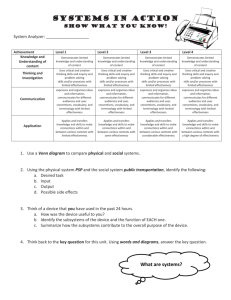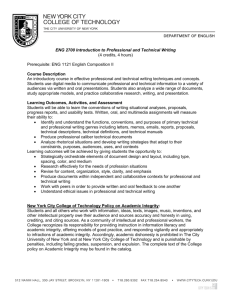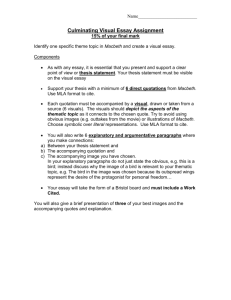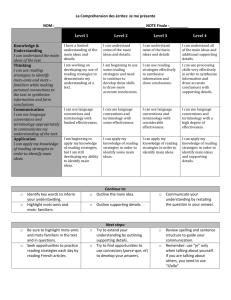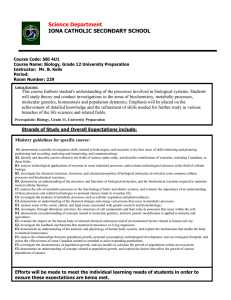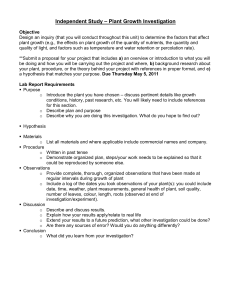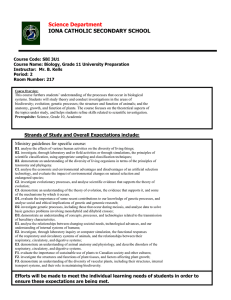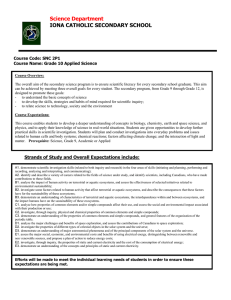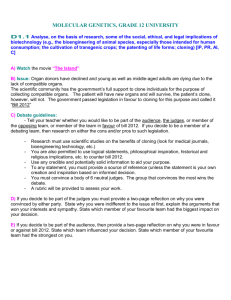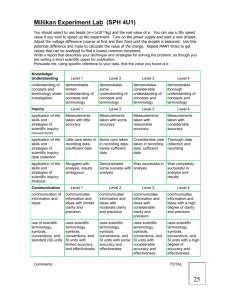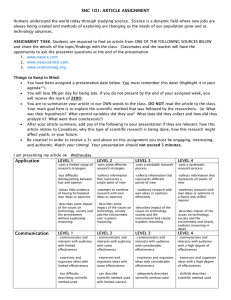The Path to the Fluid Mosaic Model Letter Assignment
advertisement
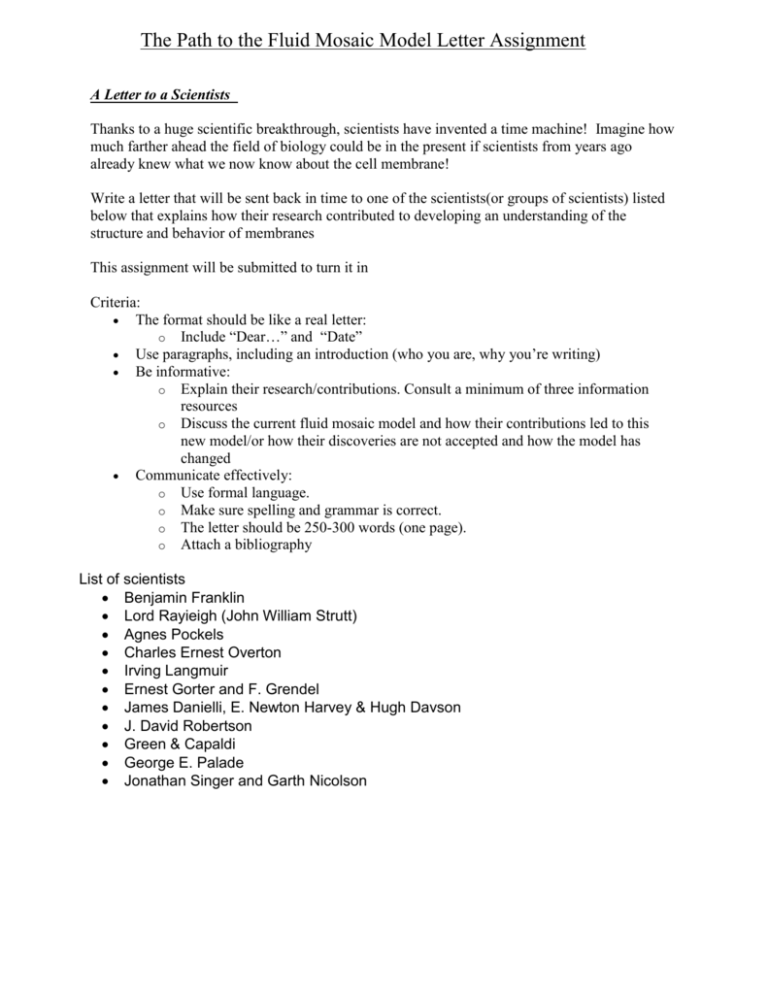
The Path to the Fluid Mosaic Model Letter Assignment A Letter to a Scientists Thanks to a huge scientific breakthrough, scientists have invented a time machine! Imagine how much farther ahead the field of biology could be in the present if scientists from years ago already knew what we now know about the cell membrane! Write a letter that will be sent back in time to one of the scientists(or groups of scientists) listed below that explains how their research contributed to developing an understanding of the structure and behavior of membranes This assignment will be submitted to turn it in Criteria: The format should be like a real letter: o Include “Dear…” and “Date” Use paragraphs, including an introduction (who you are, why you’re writing) Be informative: o Explain their research/contributions. Consult a minimum of three information resources o Discuss the current fluid mosaic model and how their contributions led to this new model/or how their discoveries are not accepted and how the model has changed Communicate effectively: o Use formal language. o Make sure spelling and grammar is correct. o The letter should be 250-300 words (one page). o Attach a bibliography List of scientists Benjamin Franklin Lord Rayieigh (John William Strutt) Agnes Pockels Charles Ernest Overton Irving Langmuir Ernest Gorter and F. Grendel James Danielli, E. Newton Harvey & Hugh Davson J. David Robertson Green & Capaldi George E. Palade Jonathan Singer and Garth Nicolson Communication The conveying of meaning through various forms Expression and organization of ideas and information (e.g., clear expression, logical organization) in oral, visual, and/or written forms (e.g., diagrams, models) Communication for different audiences (e.g., peers, adults) and purposes (e.g., to inform, to persuade) in oral, visual, and/or written forms Use of conventions, vocabulary, and terminology of the discipline in oral, visual, and /or written forms (e.g., symbols, formulae, scientific notation, SI units) Achievement level R Level descriptor The student does not reach a standard identified by any of the descriptors below. 50–59% (Level 1) The student: i. expresses and organizes ideas and information with limited effectiveness ii. communicates for different audiences and purposes with limited effectiveness iii. uses conventions, vocabulary, and terminology of the discipline with limited effectiveness 60–69% (Level 2) The student: i. expresses and organizes ideas and information with some effectiveness ii. communicates for different audiences and purposes with some effectiveness iii. uses conventions, vocabulary, and terminology of the discipline with some effectiveness 70–79% (Level 3) The student: i. expresses and organizes ideas and information with considerable effectiveness ii. communicates for different audiences and purposes with considerable effectiveness iii. uses conventions, vocabulary, and terminology of the discipline with considerable effectiveness 80–100% (Level 4) The student: i. expresses and organizes ideas and information with a high degree of effectiveness ii. communicates for different audiences and purposes with a high degree of effectiveness iii. uses conventions, vocabulary, and terminology of the discipline with a high degree of effectiveness
